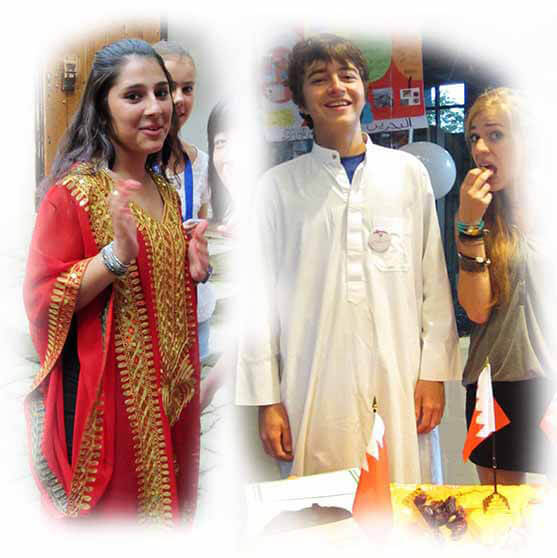18 September 2013
 Welcome to the first Newsletter of the new school year and welcome too to all pupils and parents who are new to St Chris. Last week I wrote to all parents to usher in the new term and today, as I started to put this piece together, I wondered if there would be anything else to mention just seven days later.
Welcome to the first Newsletter of the new school year and welcome too to all pupils and parents who are new to St Chris. Last week I wrote to all parents to usher in the new term and today, as I started to put this piece together, I wondered if there would be anything else to mention just seven days later.
I shouldn’t have worried – there’s always something new and fresh happening in our school!
 The Newsletter itself ranges from Infant Welcome Afternoons to a report from two Senior School students on their experiences in Germany this summer as Goethe Institute scholarship winners. In the mix also are: Junior Swim Team trials, special assemblies, the Year 12 Curriculum Information evening; tea parties and a welcome to two new SPARTA coaches, from their previous employment with one of the David Lloyd Tennis Centre’s in England. Varied and interesting as always and a precursor of the year to come.
The Newsletter itself ranges from Infant Welcome Afternoons to a report from two Senior School students on their experiences in Germany this summer as Goethe Institute scholarship winners. In the mix also are: Junior Swim Team trials, special assemblies, the Year 12 Curriculum Information evening; tea parties and a welcome to two new SPARTA coaches, from their previous employment with one of the David Lloyd Tennis Centre’s in England. Varied and interesting as always and a precursor of the year to come.
Some of you will be wondering about examinations and SATS results. These will feature more prominently in a later edition, but I can say that they are excellent and well up with the standards we have achieved in former years. In some areas we have achieved record results. The headline statistics are to be found on the home page of our website – in a format that is much easier to use than last year’s version. The GCSE and A-level results may change very slightly, since the results of a few appeals and re-marks are awaited from the examination boards.
A further matter that is pending is the outcome of the parent questionnaire; this too will be the subject of an article in a later Newsletter, probably at the start of October. The overall conclusion from the independently administered and assessed process is, however, quite clear and was worded identically in the separate feedback given for Infant, Junior and Senior parent questionnaires, quote: “The overall performance of St Christopher’s School was given as outstanding”.
In addition, I was particularly pleased to see that the number of parents in all three sections of the School who felt that the School had continued to improve over the previous year, greatly exceeded those who believed it had become less good. Further, in the case of new parents, there was a heavy majority of those who said that the School had exceeded their expectations over those who disagreed.
The staff and pupil questionnaires also revealed positive impressions and we will be revealing more details to staff and pupils soon.
Notwithstanding this pleasingly positive feedback from pupils, parents and staff, there are, in each section, areas that we are pinpointing for improvement. Watch this space for further feedback and areas that we will be working on as a result of responses to the questionnaire.
In terms of the development of teaching and learning techniques, parents might be interested in our work on developing ways and systems for pupils – from Infant to Sixth Form – to give feedback directly to each teacher on how well they feel a particular lesson, activity or sequence of lessons is going. In the modern classroom, although a teacher will assess, fairly continuously through formal and informal means, whether learning is progressing effectively (i.e. “Assessment for Learning”), it is still fairly uncommon for pupils to be asked about the ways in which a teacher actually delivers a lesson. Is the teacher going too quickly / too slowly? Is the aim of the lesson clear? Does something need to be explained further? Might a different activity be a better way of achieving the same aim? Is the environment conducive to learning? etc. etc. To those who are not teachers, the differences between assessing how learning has proceeded and looking at learning through the eyes of the pupil, might be difficult to appreciate. In fact, the changes implied are significant, involving a teacher to show readiness, to objectively and non-judgementally, accept feedback from pupils on how he or she is teaching and implying the development of high levels of self-confidence in our pupils.
Professor John Hattie’s work “Visible Learning”, based on 800 meta-analyses of thousands of research studies, involving millions of pupils, suggests that the impact of this particular addition to teaching techniques is very high indeed in terms of raising pupils’ achievement. It ranks much, much higher than class-size, effective homework setting, ability grouping, problem-based learning, other aspects of learning, coming tenth in impact from 138 possible influences on learning.
We will explain more about this topic … and another concept, termed Spaced vs Mass Practice – later in the year.

